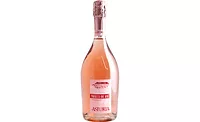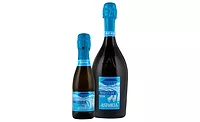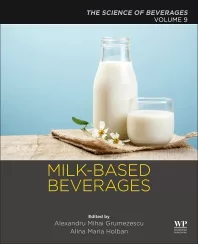Gancia unveils Prosecco Rosé D.O.C. in North America
New-to-market wine approved by the governing body for Prosecco D.O.C. appellation

Gancia, a brand of New York-based Roust Americas, unveiled a new-to-market wine that merges the popular trends of Prosecco and Rosé into a unique varietal approved earlier this year by the governing body for the Prosecco D.O.C. appellation. Gancia's Prosecco Rosé D.O.C. will arrive onshore in North America in time for Christmas and New Year occasions, it says.
"As the winery that introduced sparkling wine to Italy, it's fitting that we continue to demonstrate our spirit of innovation with Prosecco Rosé D.O.C.," said Scott Oliver, chief executive officer of Roust Americas, a subsidiary of Roust Group, in a statement. "Given the strong growth in both Italian sparkling wine and Rosé wine, we expect to see great interest as Prosecco Rosé wines start to appear on shelves and tables across the country."
Gancia Prosecco Rosé D.O.C. joins the lineup of the label's award-winning sparkling wines, and represents the latest masterpiece from Casa Gancia, which currently celebrating its 170th anniversary. Extraordinary passion and dedication went into the creation of Gancia Prosecco Rosé, which was produced in collaboration with world-renowned oenologist Donato Lanati, the company says.
"We are incredibly proud of our first vintage of Prosecco Rosé and believe its quality will win over the hearts and palates of those who taste it," added Oliver.
Beginning in 2021, Gancia’s Prosecco Rosé will be available in clear glass bottles embossed with long lines emanating out from the label like rays of sun, inspired by the sunrise over the hills of Gancia’s vineyards in Italy. With an 11 percent alcohol by volume, Gancia Prosecco Rosé D.O.C. has a suggested retail price of $11.99.
Prosecco Rosé D.O.C. is a new category in the wine industry, made possible after the Prosecco D.O.C Consortium amended the rules to allow Rosé to become part of the Prosecco appellation in early 2020, the company says. The D.O.C. refers to an area of production in northern Italy.
Prosecco Rosé differs from Sparkling Rosé in that Prosecco Rosé has definitive rules that govern its production. Prosecco Rosé must be made with at least 85 percent Glera grapes and the rest Pinot Noir, all grown within the specific boundaries of the region. Additionally, Prosecco Rosé is a vintage product with at least 85 percent of grapes coming from the vintage year, and it is aged for 60 days, as opposed to the traditional 30 days for Prosecco.
The wine industry has seen double digit growth in both Rosé and Prosecco over the past several years, making this new combination a popular trend for winemakers and consumers alike. In the summer of 2020, Rosé sales grew 20 percent, while those of Prosecco grew 34 percent, according to the company. To meet the demands of these growing trends, the Consortium anticipates production of Prosecco Rosé to be up to 30 million bottles a year.
Looking for a reprint of this article?
From high-res PDFs to custom plaques, order your copy today!







